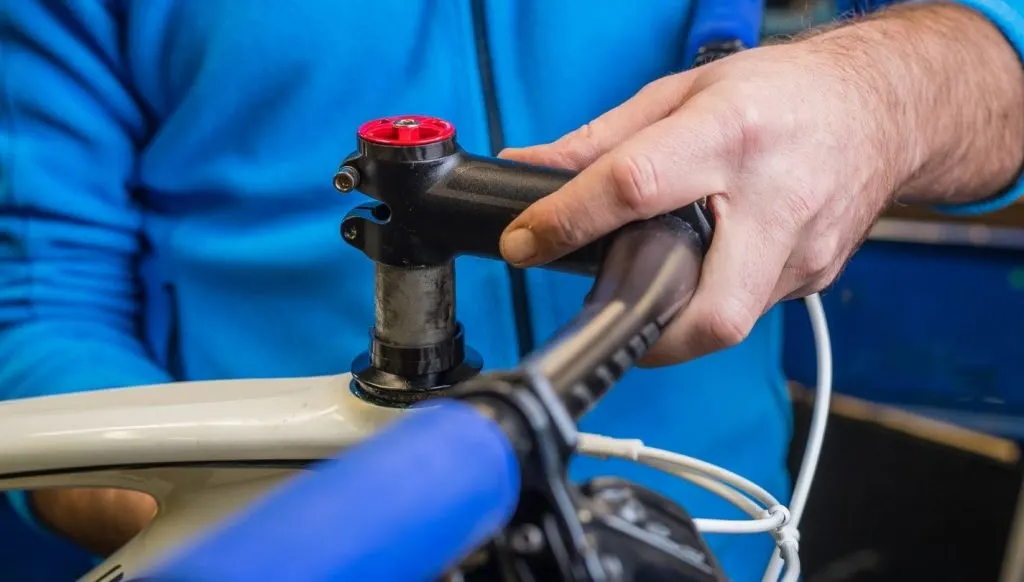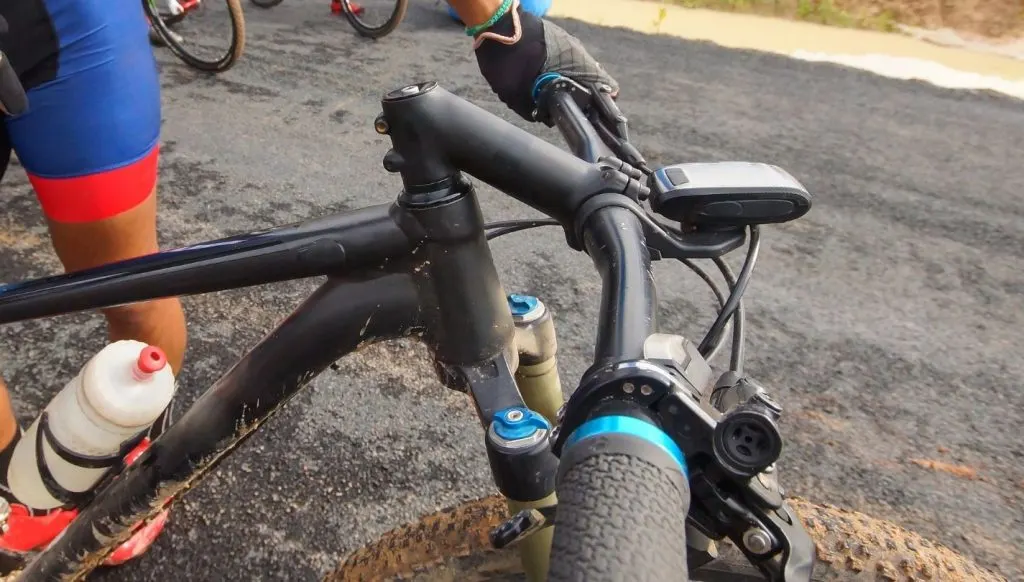
Bike stems are an essential part of any bike, whether you are a competitive rider or a casual weekend cruiser. The right stem and how it is set up can play a vital role for any cyclist and their ride. So, let’s take a look at whether or not you can safely reverse a bike stem.
Reversing your bike stem takes some time, but it is possible. Riding with the bike will take some getting used to at first because you may struggle. However, once you get the hang of it, a reversed bike stem is safe. You will run into problems if your bike relies explicitly on a forward-facing stem.
The correct fitment and comfort can make all the difference when setting up a bike. Look, I personally advise against it, but there are particular situations where it might be necessary. The key is to do it properly and safely. So, I recommend reading through this article to discuss everything you need to know about it before making the decision to go ahead.
Are Bike Stems Reversible?
The short answer to this is, yes, you can reverse a bike stem. But deciding if you want to is another question. To understand why you may want to rethink your decision, we need to start with the basics.
A bike stem does the essential job of keeping the handlebars clamped to the bike’s head tube. Without the stem in place, the only way to control the bike and direction would be to steer by holding the front forks. So, before reversing this vital component, there are two things you need to consider.
- Why: If you are reversing the stem because the bike frame is too big or want to change your reach, I suggest looking at other options or going to the bike shop for further information and getting your bike fitted correctly.
- Your bike: if you decide to go ahead with the stem reversal, well, great. However, before you buy anything or start to disassemble, you need to ensure that the front setup of the bike, such as forks, breaks, and cabling, does not rely on a forward-facing stem. If this is the case, you will not be able to reverse your stem.
Does Reversing Your Bike Stem Affect Performance?
Being comfortable while cycling can make all the difference in your overall performance, and this is where cyclists will take any advantage they can get. There are numerous different parts, add ons, and modifications in cycling that can affect comfort, including:
- the angle of the handlebars
- The correct seating height
- The right arm extension
So, to increase your performance, you should start from the easiest method to the hardest. Obviously, adjusting your seat should be the 1st step you take. Be sure to ride the bike after each step.
How Safe is it to Reverse a Bike Stem?
At the end of the day, any setup comes down to personal preference and what works for you, but it’s a common verdict among cyclists that bike stems should never be reversed for apparent reasons. When switched, it changes the entire dynamic of the bike, making it much harder to control.
This does not only put you at risk; but you are also risking danger to others you may ride with and those on the road around you. Look, reversing your stem is not the safest modification you want to be making.
So, take your time, ride the bike in a secluded area for a while until you get used to it.
Why Would you Want to Reverse Your Bike Stem?

Some cyclists may decide to reverse their stem to reduce arm reach or their preferred ergonomics, although other methods address those issues too. Many will quickly find that changing the direction of their stem is not a fix to their problems.
In the event that you are handing a bike down to a child, you might think that reversing the stem may help them fill out the bike frame better, but this small change comes with many differences, which will not be safe for the child inheriting it, at least at first.
Reversing Your Bike stem in 5 Easy Steps
If you have decided to go ahead and reverse your bike stem, then here are the steps you can take:
- The first thing you are going to need to do is to remove the stem’s faceplate. Doing this will allow you to remove the handlebars from the bike.
- Once the faceplate and handlebars are removed, loosen the pinch bolts on the side/sides of the stem. Note, these pinch bolts do not need to be undone entirely; loosen them enough until you can rotate the stem easily or easily slide the stem off the head tube.
- Now, unscrew and remove the top cap off of the head tube.
- With everything out the way, you can now rotate the stem by 180 degrees to reverse it.
- When you have the stem in the desired position, nip up the pinch bolts to hold its position in place and then begin to reassemble.
What is it Like riding With a Reversed Bike Stem?
Riding with a reversed stem is less than ideal, to say the least. The bike’s steering becomes very twitchy and impossible to control. The slightest turn of the handlebars sends the bike sharply veering off to the side.
Stability becomes a significant problem while focusing on the minor corrections to control the steering; your balance truly gets tested. Everything feels utterly unnatural on the bike and impossible to judge or even use. Basically, picture your handlebars being inverted; now try riding like that. Not the easiest thing to do, right? Well, that is precisely the effect that reversing your stem will do.
Difference Between Flipping and Reversing your Bike Stem
When reversing a stem, you are rotating it 180 degrees to face backward. This means that the stem is in front of the handlebars.
When a stem is flipped, it is turned upside down while facing the same direction; the handlebars will always be after the stem as usual when it is flipped. Cyclists will often flip a stem to change the angle of their handlebars to suit their posture better.
Final Thoughts
While reversing a stem may be a quick solution to your problems, it just isn’t worth it in the long run. Stems are a vital part of the bike build and performance. They should not be taken for granted. There are certain things to think about when it comes to choosing a bike stem.
- Is it made from the correct material?
- Is the stem strong enough?
- Is it a high-performance part?
- Does it have the angles you are looking for?
Whatever decision one may come to, I’d like to end off with this:
Cheaper and easier is not always better, often these kinds of things will be expensive, especially if you want it done correctly. So, do it properly the first time, go for something that is strong and meets the ergonomics you want. Getting your bike fitted perfectly is much safer than trying to make it work.
